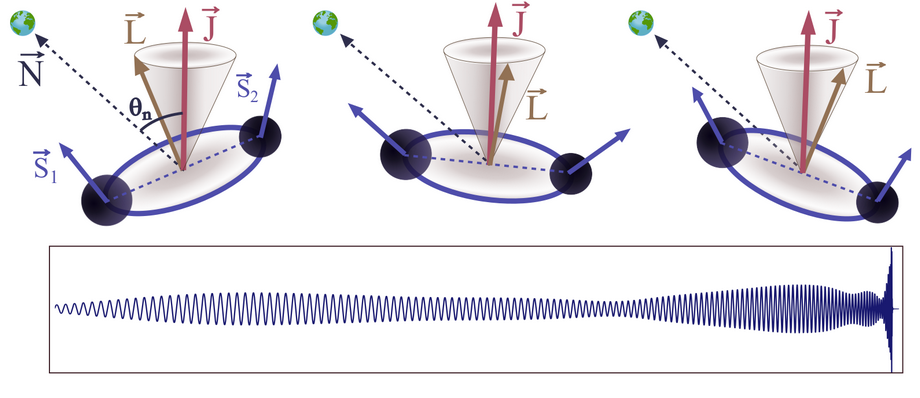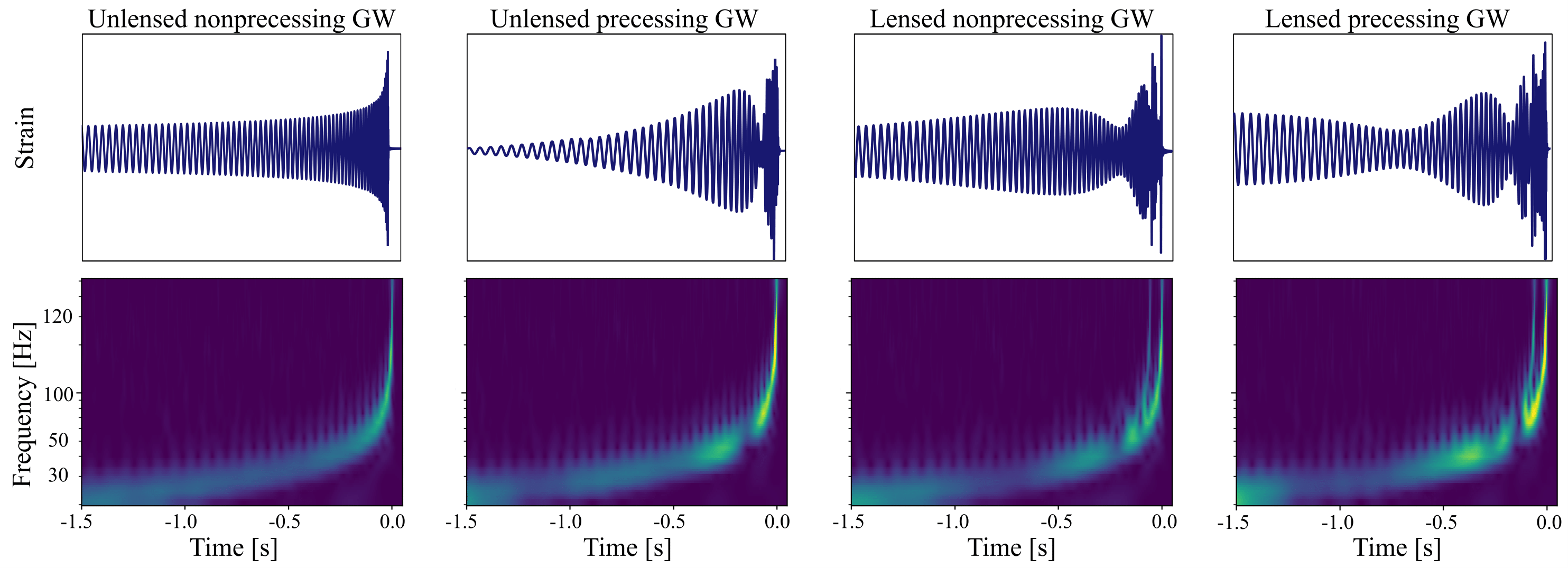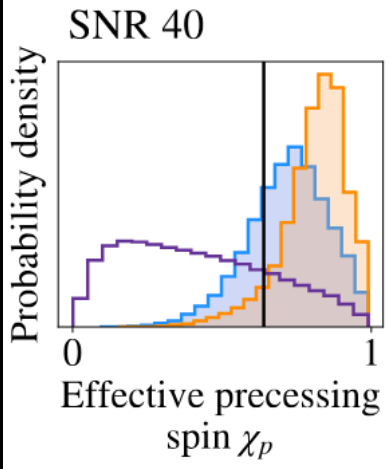Can we distinguish millilensed GWs from precessing GW signals?
When gravitational waves(GWs) are lensed by small mass objects (102 - 106 M⊙), multiple copies of the GW signal overlap on top of each other. The overlapping of individual millilensed signals would produce frequency-dependent beating patterns observed in the waveform shape. Precessing binary black holes can mimic the same beat: misaligned spins tilt the orbital plane over time, leaving amplitude and phase modulations that look deceptively similar to those produced by lensing.

So if we catch a waveform with a clear beat, what’s really behind it—lensing, spin-induced precession, or something else?
In this project, we explored how well we can tell apart two look-alike signals—millilensed and precessing binary black holes—using simulated signals for the current LIGO–Virgo–KAGRA detector network. Our approach combined:
-
Signal-to-noise ratio (SNR) comparisons across different waveform templates.
-
Parameter estimation (PE) studies, where we injected various combinations of (un)lensed and (non)precessing signals into simulated LVK data and recovered them with different model assumptions. This covered a broad range of binary configurations and SNRs.

What we found: In most cases, we could recover lensing parameters even when the analysis model ignored precession.
But when lensing was neglected, things got messy-—missing lensing effects could mimic extremal spins (up to ~0.9), far above the ~0.7 spins predicted for astrophysical black holes.
Takeaway: If we see a gravitational wave that looks highly precessing, we can’t jump straight to “extreme spins”. It might be a sign that lensing physics is hiding in plain sight—and ignoring it could completely distort our astrophysical conclusions. If you want to find out more, check out our paper (Liu & Kim, 2024)!
References
2024
-
 Can we discern millilensed gravitational-wave signals from signals produced by precessing binary black holes with ground-based detectors?Phys. Rev. D, Dec 2024
Can we discern millilensed gravitational-wave signals from signals produced by precessing binary black holes with ground-based detectors?Phys. Rev. D, Dec 2024